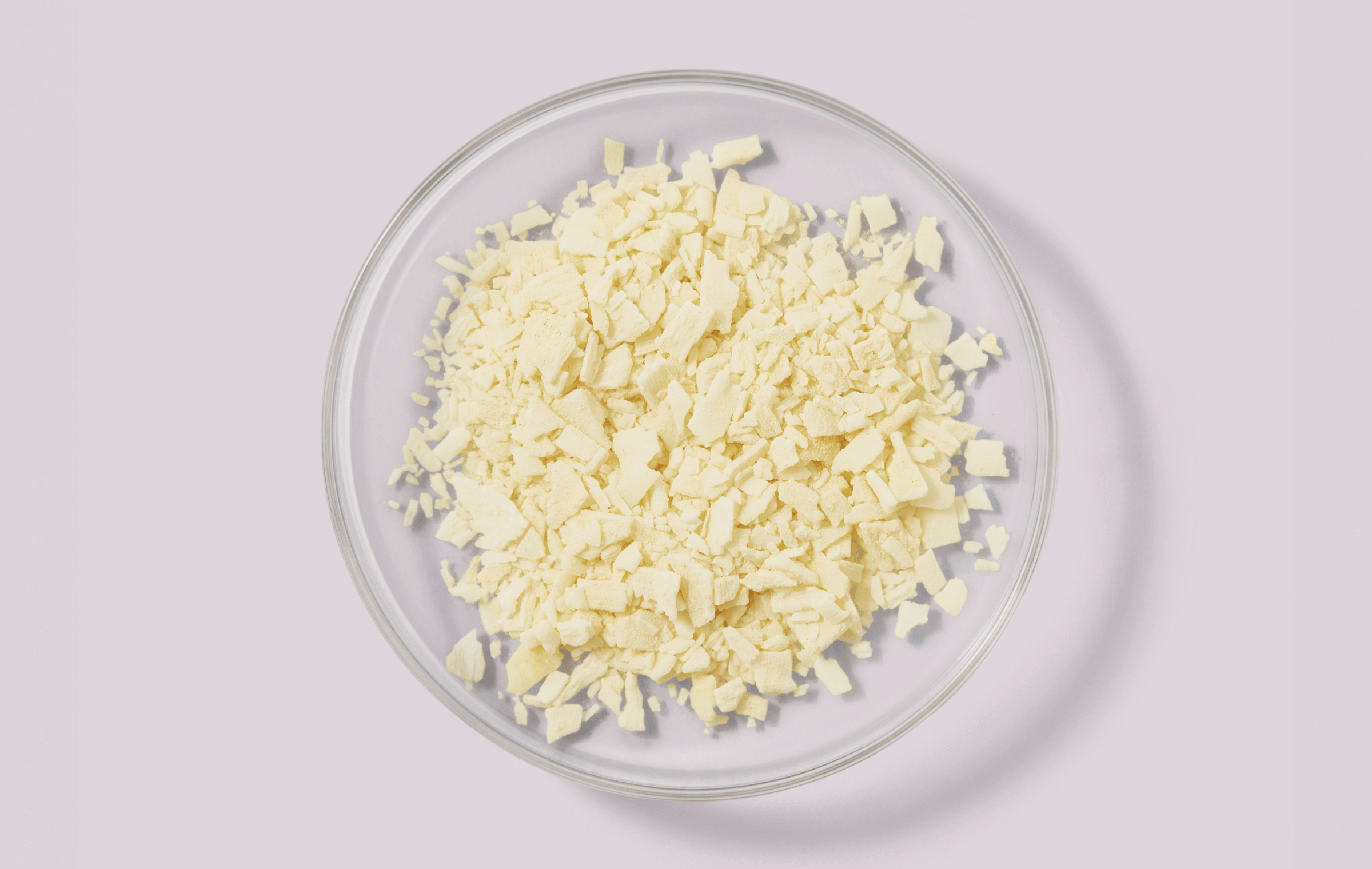
Reading: 4 minutes
Sugarcane and healthy, beautiful skin — what could these two possibly have in common? Turns out, this plant doesn’t just sweeten things up, it also brings us dermatologist-favorite skincare ingredient glycolic acid.
A natural-origin powerhouse, glycolic acid is known for its brightening, smoothing, and unifying qualities. Join us as we share its long list of benefits and how to include it in your routine. The journey to radiant skin starts now — ready to come along?
THE BASICS
GLYCOLIC ACID
WHAT IT IS: An alpha-hydroxy acid (AHA) derived from sugarcane.
WHAT IT DOES: This exfoliant helps support skin turnover, improve texture, add brightness, and balance out oil levels.
WHO IT’S FOR: Depending on the concentration, glycolic acid can be gentle enough for all skin types. But it’s best to start slow and consult your dermatologist.
HOW TO USE IT: Use it at night on clean, dry skin via serum, cream or gel formulas.
GOES WELL WITH: Hyaluronic acid, niacinamide, bakuchiol
DON’T MIX WITH: Space out the use of vitamin C products (opt for vitamin C in the morning and glycolic acid at night). As for retinal, consider alternating nights using the skin cycling method.
TRY IT IN: Glicoisdin®
What is glycolic acid?
This alpha-hydroxy acid is one of the most popular for a few reasons. Among them, glycolic acid is the simplest in structure and the smallest in size — meaning it has a low molecular weight. Why’s that important? These characteristics allow it to easily penetrate the skin, working to exfoliate. One of glycolic acid’s strong points is just that: the ability to act on all layers of your skin.
How glycolic acid works
As an exfoliant: It acts on the stratum corneum (the outermost layer of the skin). In this layer, glycolic acid dissolves the bonds that keep dead or aged skin cells sticking to the surface. By dissolving these bonds, it eases their removal. And this gentle exfoliation helps your skin look fresher, brighter, and more even in tone.
As a skin renewer: It penetrates skin’s layers to support its collagen. This action helps the skin feel firmer and minimizes the appearance of fine lines and wrinkles. The result? Smooth, radiant, and uniform skin.
As a brightener: Through its exfoliating and renewing action, glycolic acid helps skin to shine at its brightest. It also supports oily skin by reducing the build up of dead cells that can clog pores, as well as evening out any texture or dark spots left behind by old breakouts.
Even more good news? This multitasker can offer all of the above at once. But, another advantage that glycolic acid offers is that it’s customizable — using higher or lower concentrations can help you focus on one skin benefit or the other.
What concentration of free glycolic acid is right for you?
Since different benefits shine through in different glycolic acid formulas, choosing the right concentration is crucial. Overall, lower percentages are ideal for gentle exfoliation, while the higher ones work to combat spots, wrinkles, and imperfections.
Here are the specifics:
Light concentrations
A free glycolic acid concentration less than 4% is considered low. This amount offers gentle exfoliation, ideal for AHA first-timers or those with dry skin looking to boost elasticity and luminosity.
Moderate to intense concentrations
A free glycolic acid concentration between 4% and 8% is considered mid-level, where continued use helps revamp skin texture and tone.
Once your skin gets used to it, you can try a free glycolic acid concentration between 8% and 10%. This level is perfect for experienced AHA users that want to minimize the overall signs of skin aging.
How to introduce glycolic acid into your routine
Now that you know the theory, it’s time to put it into practice. Wondering just how often should you exfoliate your skin? Regardless of your skin type or skincare goals, it’s always best to start low and slow. As your skin gets used to glycolic acid, you can opt for a higher concentration (if needed).
No matter where you start, there are a few important things to consider:
Clean skin is the first step
Clean skin is like a blank canvas — providing the perfect base for all the products in your routine to work as expected. So, regardless of whether you choose glycolic acid in the form of serum, gel or cream, the first step should always be cleansing.
To get the best results? Use a gentle oil-to-milk formula that not only cleanses, but also hydrates.
Combine it with the right ingredients
Although it can be gentle enough for sensitive skin, glycolic acid is still an acid. And as with any other ingredient, there are combinations that are better to avoid. A simple rule? Leave out other products featuring strong acids, such as salicylic or lactic acid.
In general, it’s not likely to cause any conflicts with your favorite eye contour or trusted moisturizer. But, in any doubt, always consult the ingredients with your dermatologist.
The perfect allies? Products with hyaluronic acid or aloe vera can help keep skin feeling calm and moisturized.
Sunscreen is a must
Sunscreen is essential in any routine, whether it includes exfoliation or not. However, it’s all the more important when using glycolic acid. This ingredient may make skin more sensitive in general, and, therefore, to the sun — increasing the risks of solar radiation and the appearance of sun spots. But broad spectrum sunscreen works to protect you against this and more. In fact, it’s the perfect final step in your routine to prepare your skin for the day ahead.
Following these three tips, you can feel confident in adding glycolic acid to your nighttime skincare routine with ease.
Just the FAQs
Can glycolic acid damage the skin?
Glycolic acid is still an acid. And if used excessively or aggressively, it has the potential to cause irritation. But at the right concentrations and frequencies, glycolic acid is an ideal ingredient. If you follow proper skin preparation, check in with your dermatologist regularly, and use sunscreen during the day, you should be all set.
Who is it suitable for?
Glycolic acid is a friend to all skin types (when used in the right amount). Look for customized formulas targeted towards your skin type and needs.
For sensitive skin, gentle glycolic acid products featuring vitamin E can help to soothe and protect. With more intense products, look for formulas including aloe vera to help calm the effects of higher acid concentrations. Your skin is unique — adapt your routine to what works best for you.
What’s more effective: glycolic acid or retinal?
Both are great choices depending on your skin goals. Glycolic acid is perfect for brightening and improving skin texture, while retinal is ideal for supporting skin renewal and minimizing the look of wrinkles. Even better? They can complement each other! After your skin’s gotten used to both ingredients, try using the two (on alternate days) to maximize results.
Exfoliating, brightening, renewing — this hero ingredient is multifaceted, just like you. Here’s a gentle reminder that you deserve a skincare routine that makes you feel radiant both inside and out.
No votes yet.
Please wait…
Editorial Team
Our namesake embodies the spirit of embracing life and all its wonder. As wellness journalists, we explore topics that invigorate the senses and keep curiosity alive. We believe that glowing skin is the result of a healthy body and mind. Weaving beauty with science, we aim to inspire you to live young at every age.






